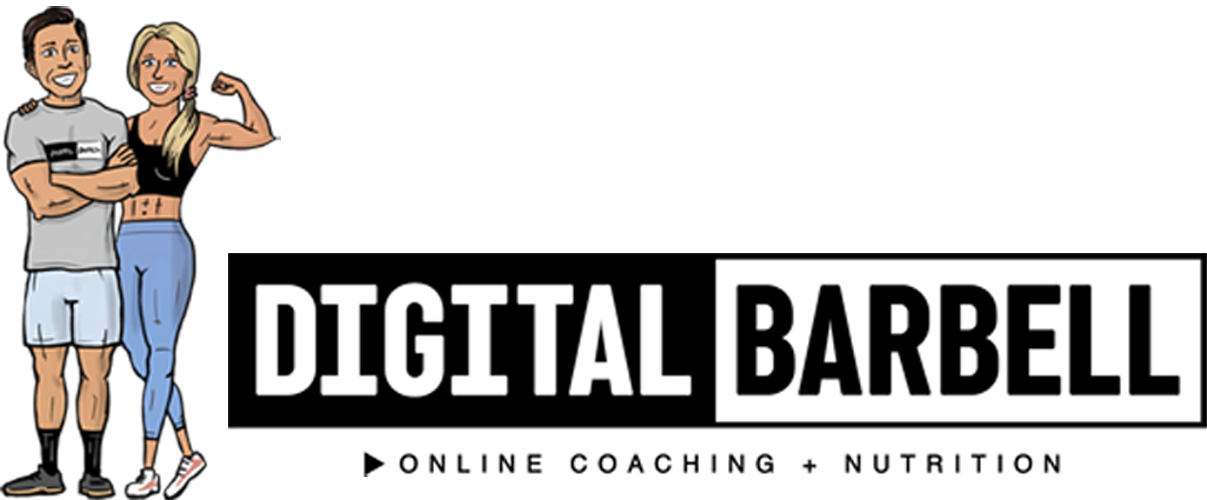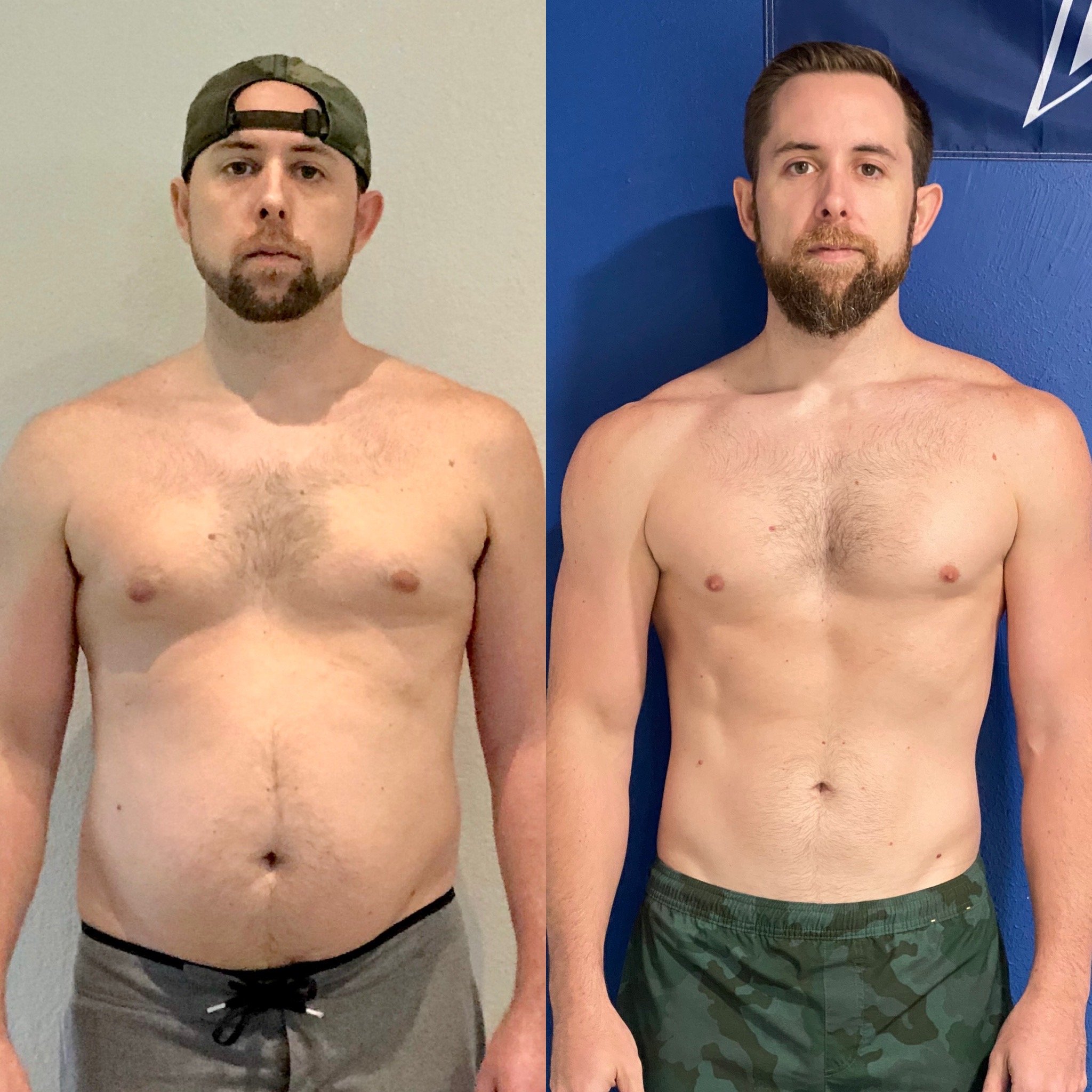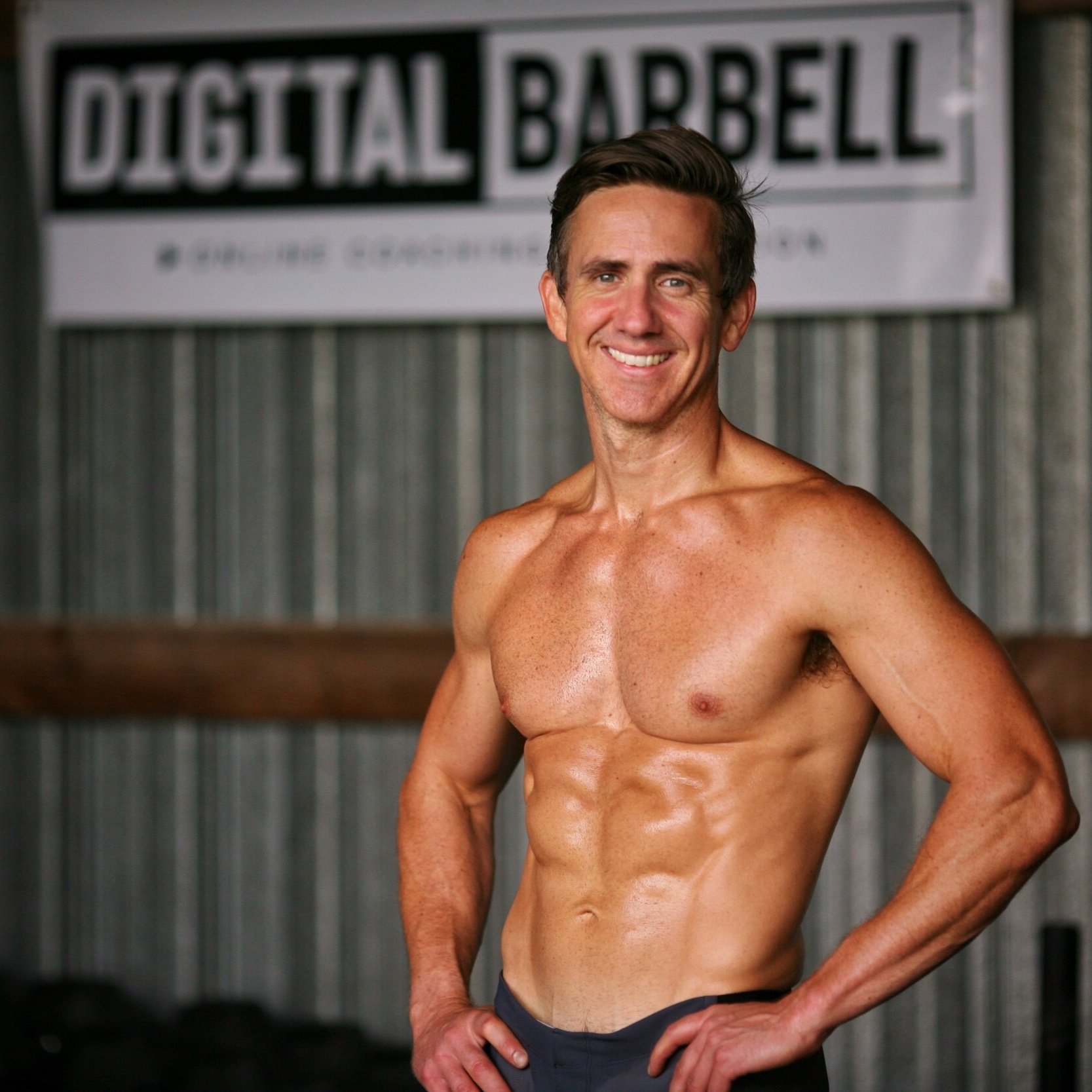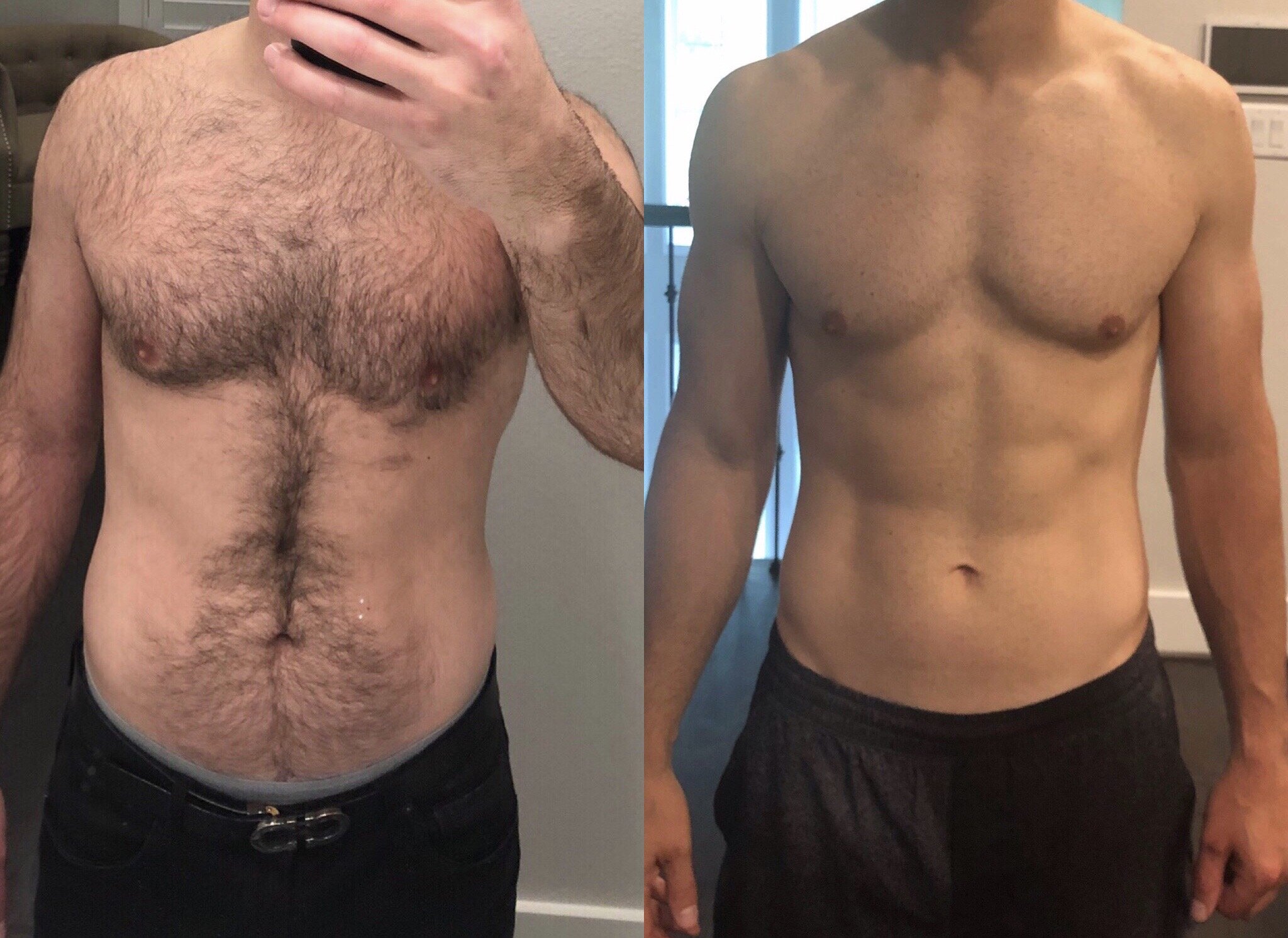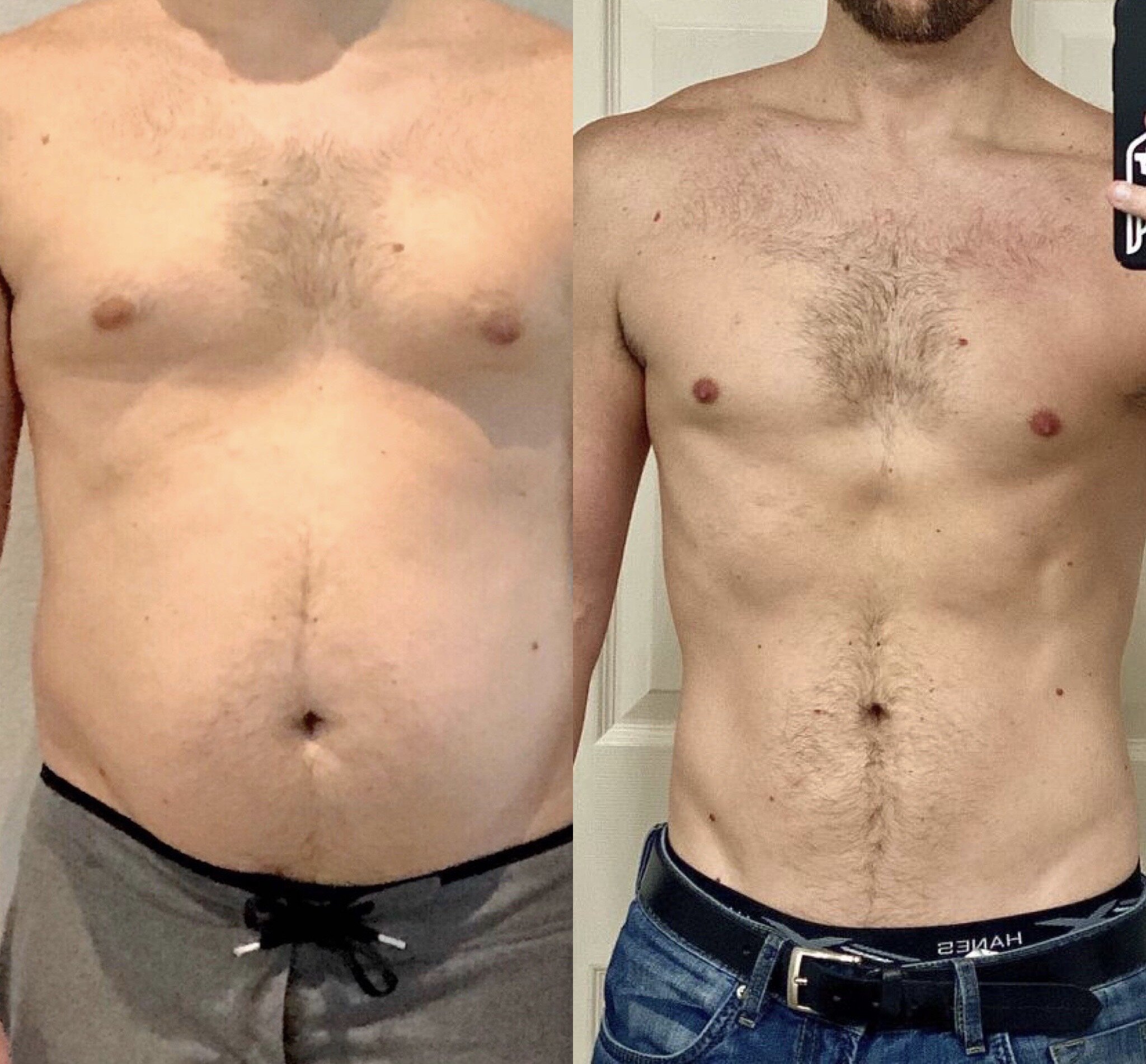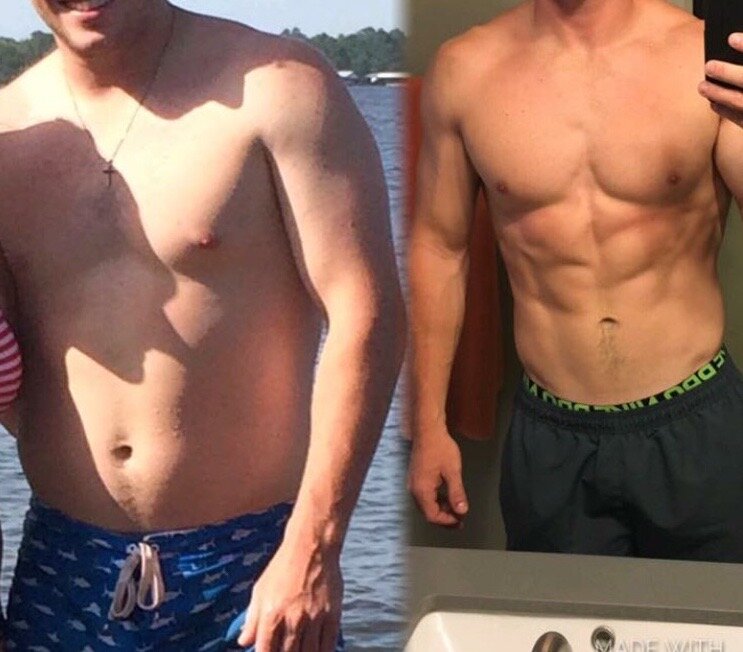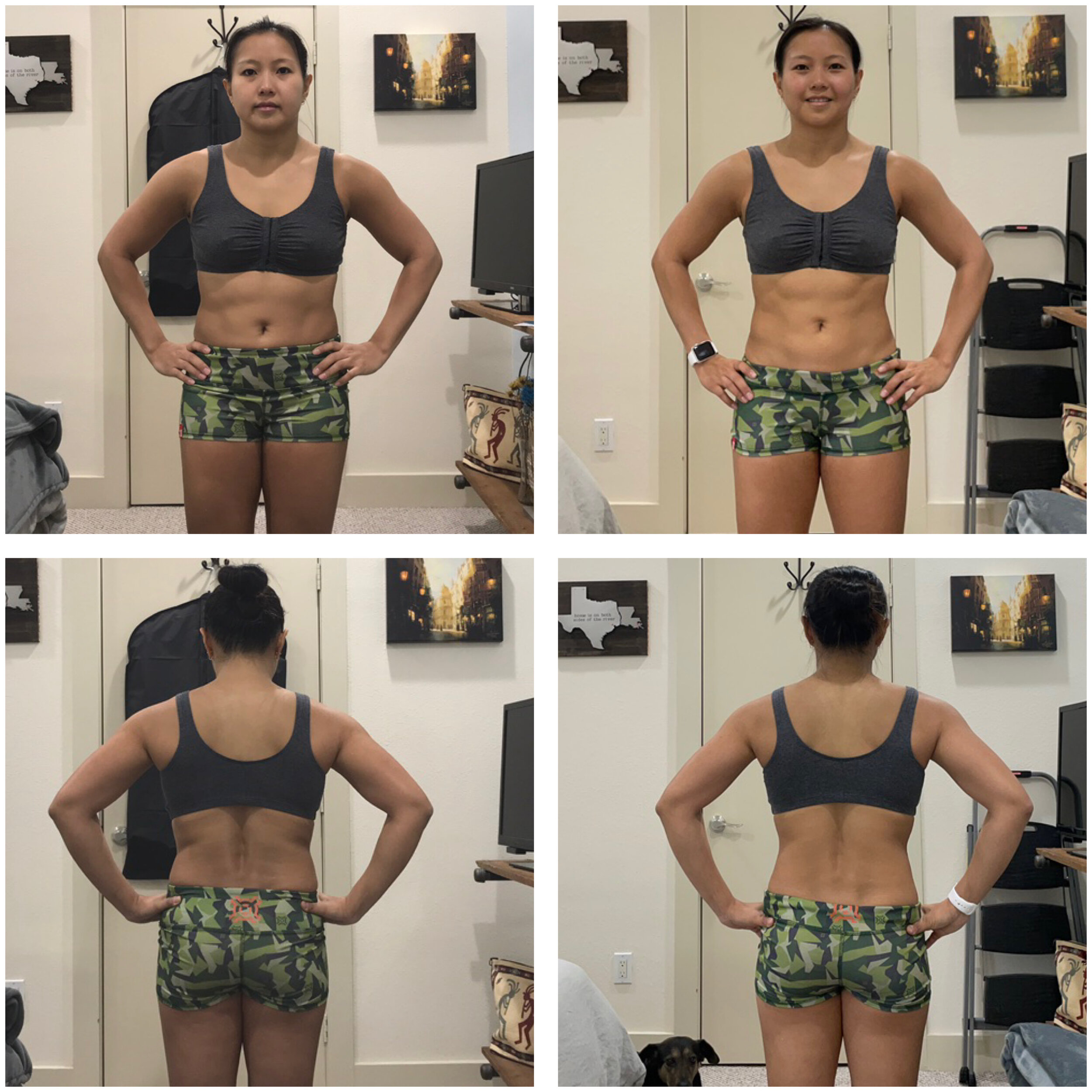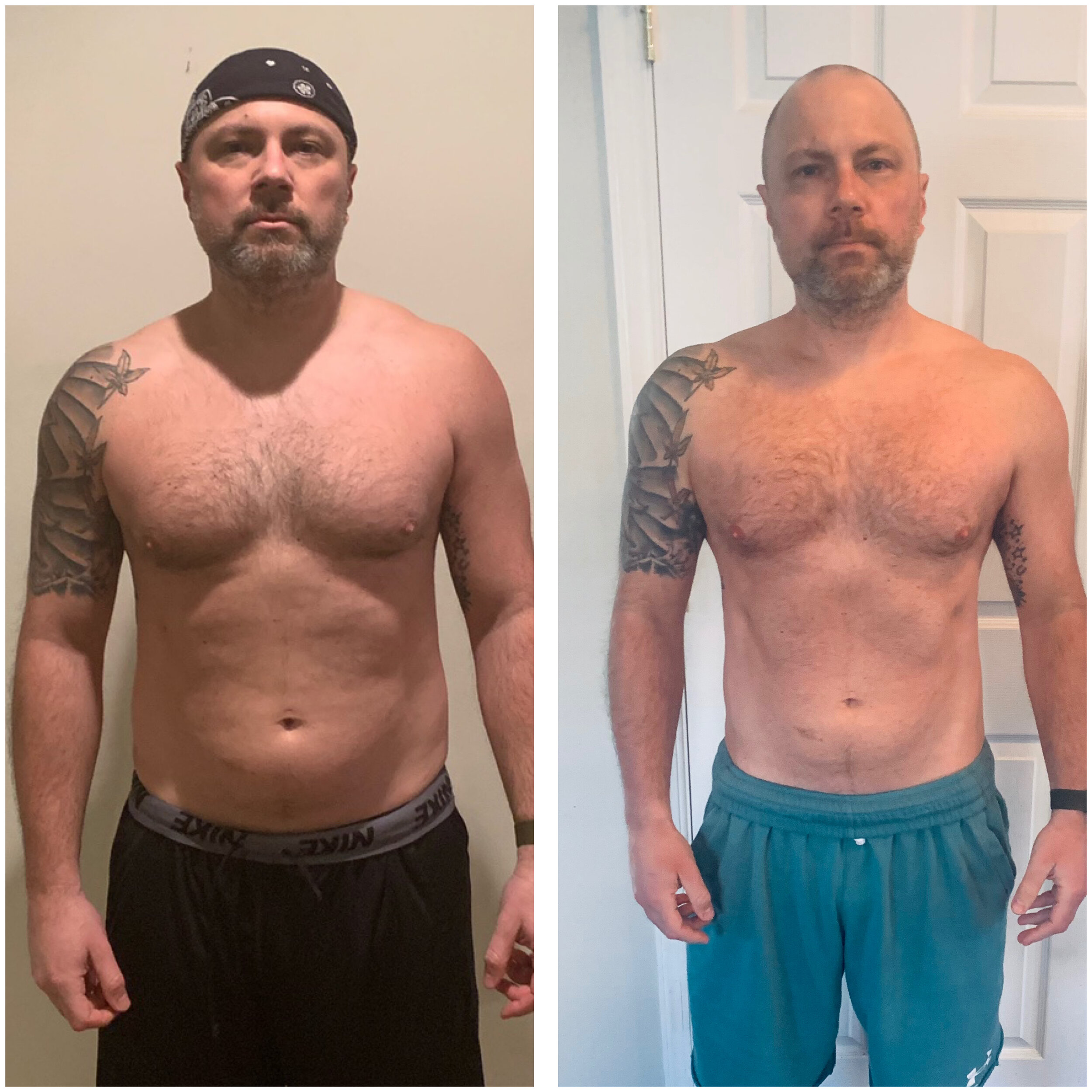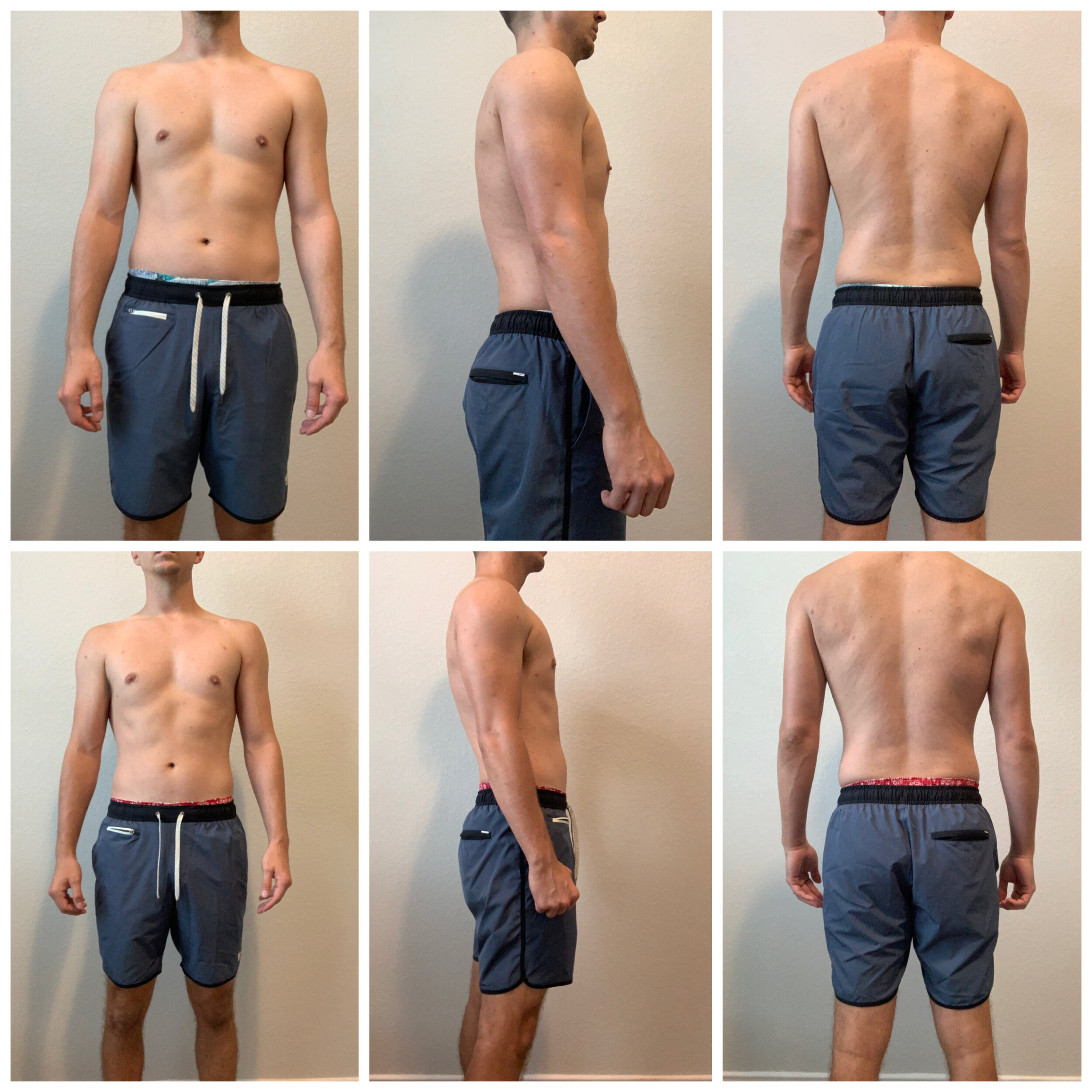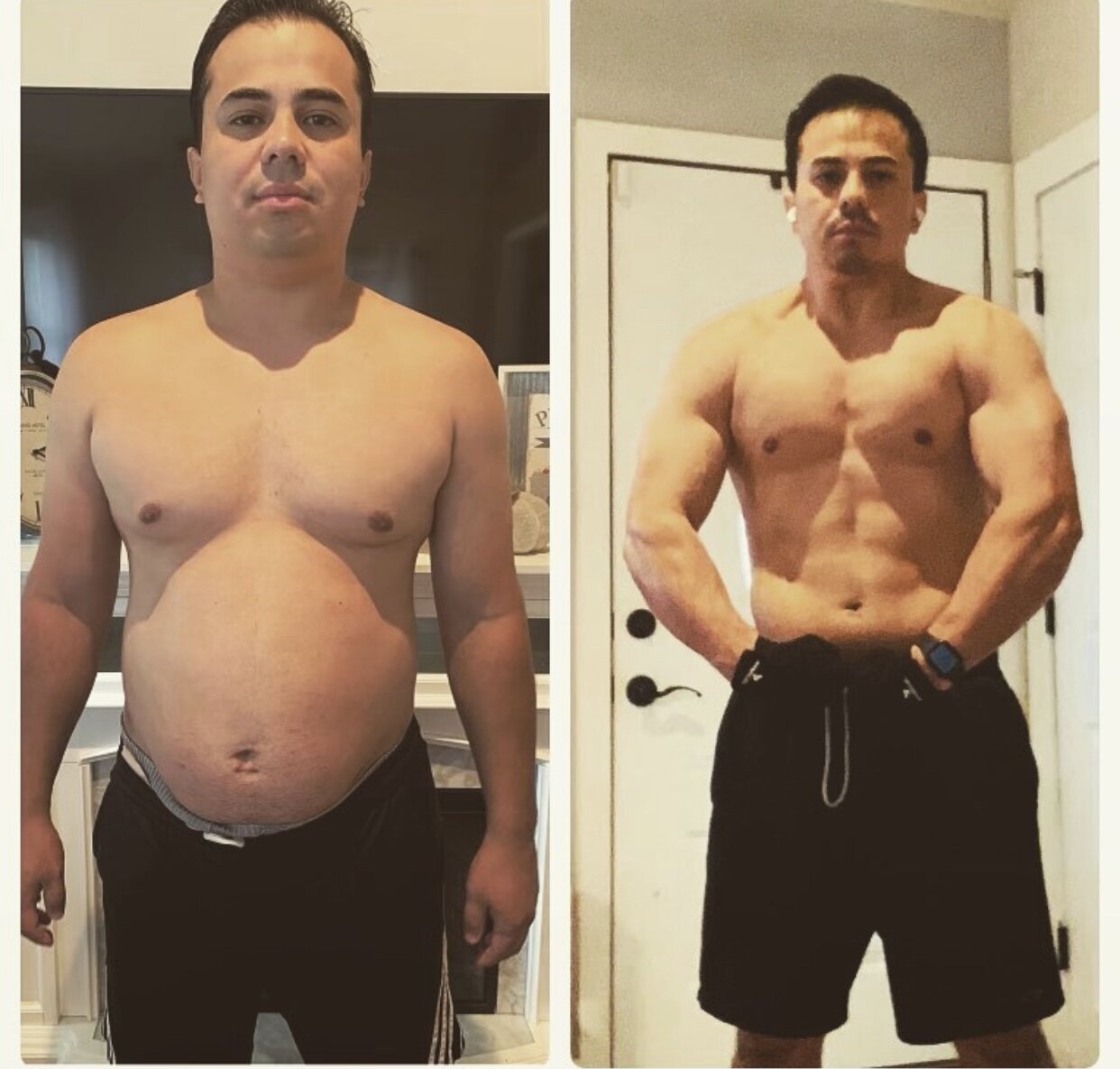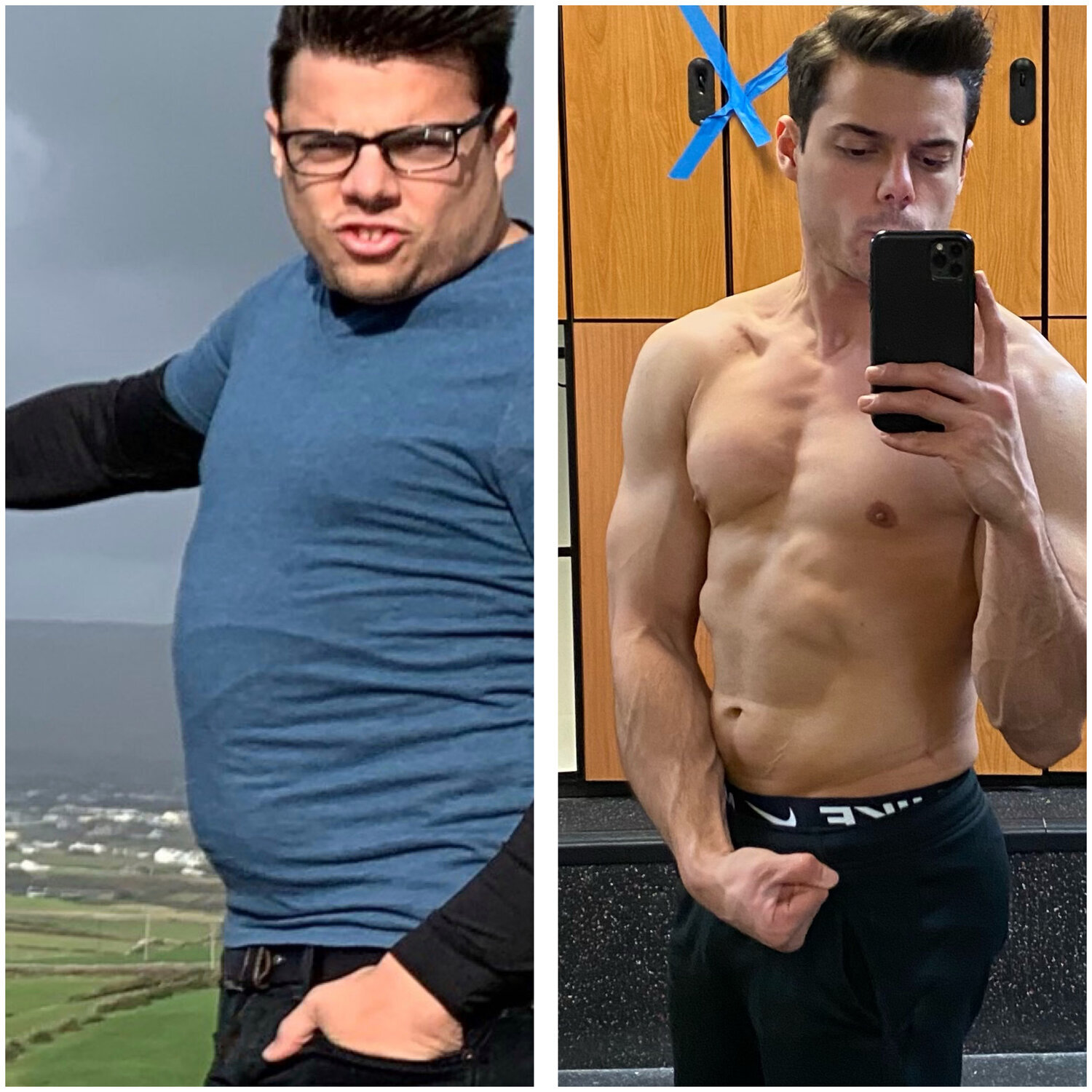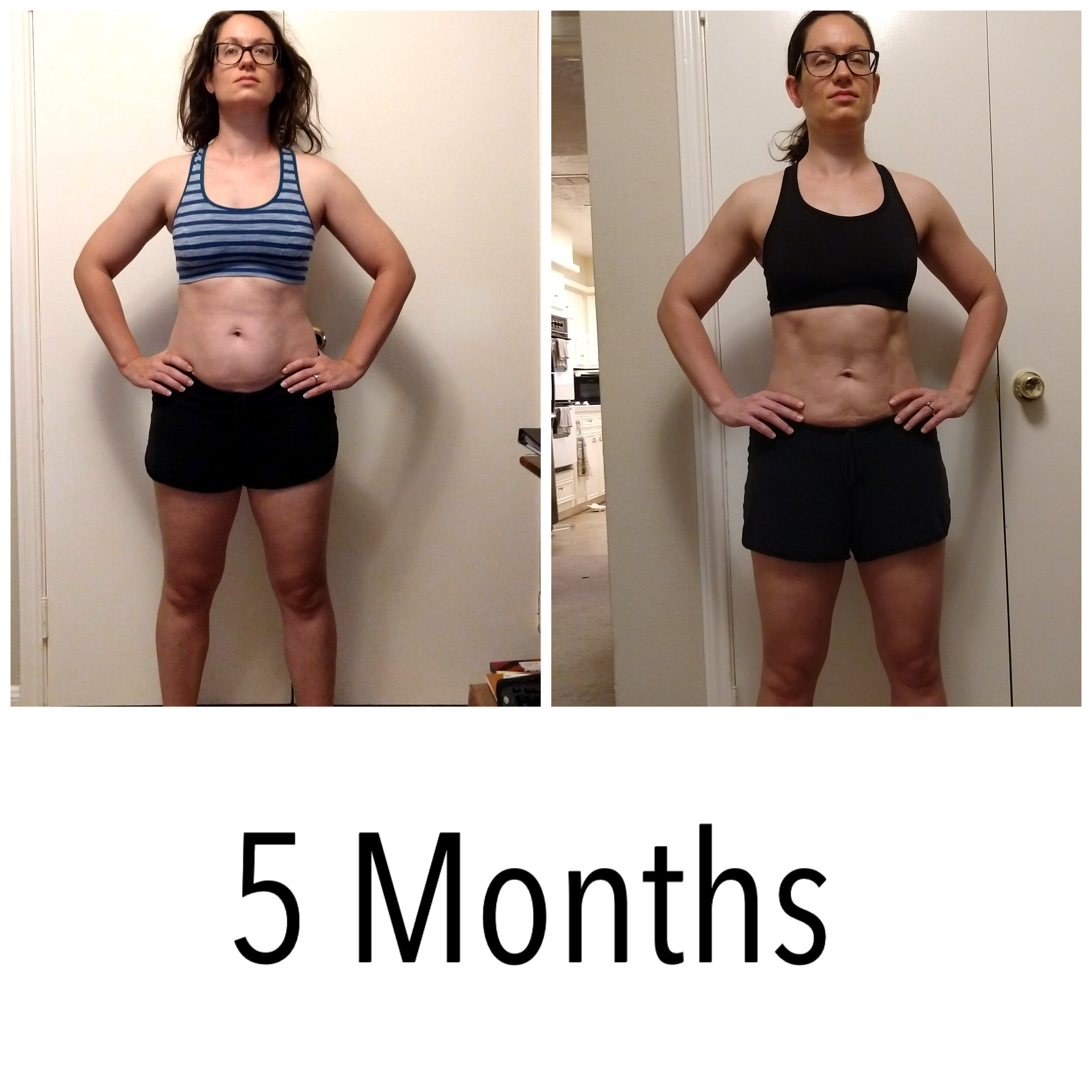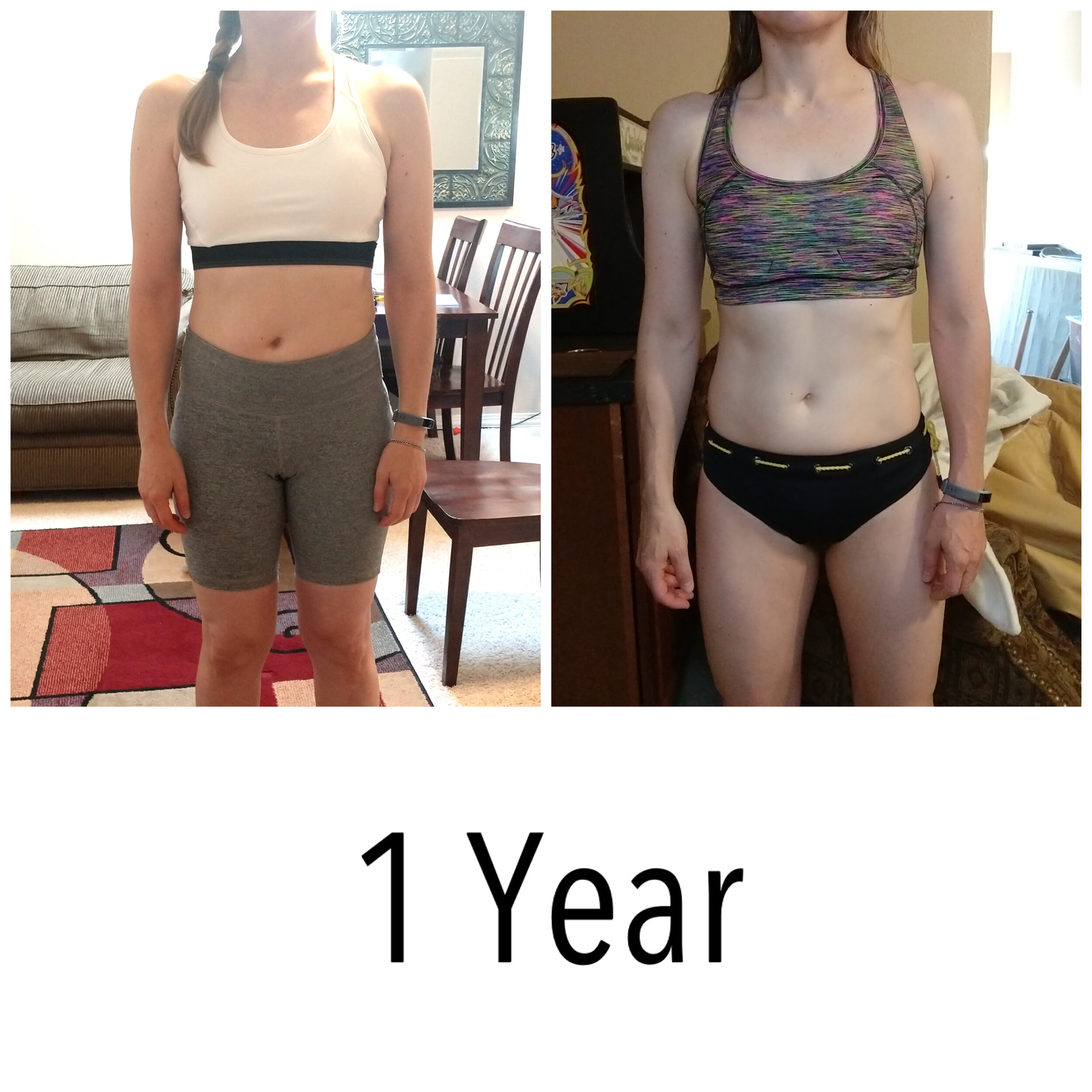What Is Skinny Fat and Exactly How to Avoid and Fix It - Training and Nutrition
WHAT IS SKINNY FAT? HOW TO AVOID IT AND HOW TO FIX IT.
Written by Jonathan Fletcher
Before we begin… I have a gift for you. For years I worked out with no results to show for it. I put together the 10 Reasons You Might Be Working Out But Don’t Look Like it. I’ll email you every day for 10 days sharing why what you’re doing isn’t working, and what to do instead. Click the button below!
My “Skinny Fat” Story
Are you pretty thin but still not thrilled with how you look in a bathing suit or the way you fill out a shirt? I’m talking to both men and women here.
It’s not that you want or need to lose weight, but you know that you want to look and feel better.
You’re not fat, you’re skinny fat.
I’ve been there, and in this article, I’m going to tell you how to fix it.
I’ve been through many different eras in my fitness journey, and have been many sizes and weights.
When I was 200lbs and out of shape I did no form of exercise and over ate routinely.
When I was 160lbs and out of shape I did cardio and boot-camp style workouts that included things like running, jumping, plyometrics, and moves with light dumbbells.
It wasn’t until I learned how to eat and how to work out that I was able to change from skinny fat to where I am today.
200-lbs
AND OUT OF SHAPE
160-lbs
AND OUT OF SHAPE
160-lbs
AND IN SHAPE
What does skinny fat look like?
To me, it’s a physique where everything blends together with no separation or definition from where one body part/muscle group begins and ends. Picture an arm from the top of the shoulder all the way down the hand that’s the same size. No beginning and end of the shoulder, bicep, tricep, or forearm. Or how about a midsection that isn’t “big” but looks loose or like it’s melting? Ok, I went too far.
Skinny fat is the PRESENCE of average or slightly below average amounts of body fat in the ABSENCE of any substantial muscle.
KNOW THIS: The recipe for skinny fat is low amounts of muscle + average amounts of fat.
I’m not just talking to my fellow dudes here. Women don’t want to look “skinny fat” either.
They want to see the shape of their arm muscles when they wear sleeveless shirts and see muscle tone in their legs at the beach or in a skirt.
I used the word “tone” there on purpose. Many of our female clients come to us wanting to look more “toned”. What does that mean? Well, it’s the opposite of skinny fat.
If the recipe for skinny fat is very little muscle and the presence of average body fat, then we need the opposite.
KNOW THIS: The recipe to kill skinny fat is to have an above average amount muscle + below average body fat.
That’s what we chase to get the athletic look we’re after. How much muscle you choose to build is based on your training, your nutrition, and your genetics. Don’t worry, we will get to that.
Ladies, that toned look where you can see the lean muscles of your arms and back when you move and being able to see your calves when you put on heels is what you get when you decide to cure skinny fat. The presence of muscle, in the absence of excess fat = toned.
There are common factors and variables that we see time and time again leading innocent men and women into the skinny fat zone.
Let’s break them down into two main categories, and give you the fixes for both.
Those two main categories are:
NUTRITION TRAPS that lead to skinny fat
TRAINING TRAPS that lead to skinny fat
By the time you finish this article, you’ll have all the tools you need to head in the right direction.
You can also hire us to take the guesswork out of the whole process by clicking HERE.
How Your Nutrition Can Make You Skinny Fat
Starting on the nutrition side, we need to discuss a few foundational principles before we get into the skinny fat traps.
#1 - Calories
Calories are the energy currency for our bodies. All food contains calories. This is a good thing since we need calories for energy. The tricky part is that we only need a certain number of calories per day, and not all foods contain the same amount and type of calories.
The number of calories we eat in relation to the number of calories that we burn controls our body weight.
#2 - Macronutrients
“Macros” are the 3 categories that all calories can be put into. The way that you break up our calories across the macronutrients affects your body composition and performance.
Body composition is the relationship of how much fat vs. muscle you have.
Protein - 4 calories per gram - Protein comes from things like animal meat, eggs, and dairy. Protein has the amino acids required to build and maintain muscle. Protein is important.
Carbohydrates - 4 calories per gram - Things like fruits, vegetables, grains, and sugar. Carbohydrates are converted to glucose when eaten and are then burned for energy.
Fat - 9 calories per gram - Things like oils, nuts and nut butter, seeds, avocados, and cheese. Fat helps regulate our hormone function, skin, hair, and nail health, and helps our bodies absorb vitamins and minerals into our cells.
#3 - Energy Balance
Remember how we agreed that the total number of calories we eat affects our body weight? This is the balance between the calories that we eat and the calories that we burn. When we eat more calories than we burn we store those extra calories in our fat cells. When we eat less calories than we burn our bodies tap into our existing fat to get the extra energy we need.
There are three main nutrition traps that lead people to end up in the skinny fat camp. Let’s take them one at a time, and talk about how to do it the right way instead.
SKINNY FAT NUTRITION TRAP #1: How not eating enough protein can make you skinny fat
Remember how we said protein contains the amino acids necessary for building and maintaining muscle? And remember that skinny fat is largely the result of low amounts of muscle covered by average amounts of fat?
If you’re not eating enough high-quality protein daily, your body won’t have the fuel it needs to build new muscle.
Did you notice that I said “high-quality protein”? The thing is, not all protein is created equally. Let me explain.
Different sources of protein contain different amounts and different types of amino acids. For our purposes of crushing the lack of muscle that leads to that skinny fat look, we want to be getting most of our protein intake from “complete proteins”.
That means they have all 9 of the essential amino acids, including the branch chain amino acids (Leucine, Isoleucine, and Valine). These are the bad boys that really make your muscles grow. Complete proteins are mostly from animal sources like meat, milk, cheese, and eggs. It’s harder to find plant sources that are complete proteins, but they are out there. Just read the article below.
Lots of foods have trace amounts of protein. Heck, even celery has a little protein. But if we’re truly trying to build muscle, we need to be focusing on the heavy hitters of protein: the complete proteins.
So now you’re probably wondering just how much protein should I be eating if I want to change the way that I look. The truth is that everyone’s needs vary, but we do have research to lean on for some solid recommendations.
Shoot to get between .7g-1.2g of protein per day per lb that you weigh. So a 185lb man should be trying for between 130g and 222g per day, or a 135lb female should shoot for between 95g and 162g per day.
If you’re over the age of 30, and you have significant body fat, skew toward the higher side of that range. We become less efficient at using protein as we age and research has shown higher protein intake to be helpful with fat loss.
You can get as detailed with your protein intake tracking as you’d like. You can weigh and measure each serving throughout the day and log it in an app like MyFitnessPal, or you can look up the nutritional info online and keep a cheat sheet on your phone.
Of course, the more accurate you decide to be, the better your results will likely be.
If you’ve been skipping breakfast and generally eating the standard American diet, I’d be willing to bet your protein intake is between 1/3 and 1/2 of the amount optimal for reversing the symptoms of skinny fat.
Jumping your protein intake up drastically in a short time can certainly be a shock to many people’s digestive systems. If you have 50-100g of protein per day that you need to add to your diet, do it gradually. Try adding 5g-10g per day and be sure to keep your water intake high during the process. You’re welcome.
You might be surprised how much protein you should be eating when you see it in real life. Don’t stress out about exact numbers and don’t get frustrated if you fall short every so often. Just making the gradual shift to a higher protein diet will pay dividends in and of itself. Just do it consistently and stick with it. We will talk a little later about exact timeframes.
SKINNY FAT NUTRITION TRAP #2 - How eating the wrong number of calories can make you skinny fat
That’s right, calories matter. They matter a lot, even if there is a diet fad like Carnivore that says they don’t. Our bodies run on calories for energy. The balance (energy balance) between the number of calories that we’re eating and the number of calories that we’re burning is a big hairy deal in regards to our body weight and our ability to end up looking like some semblance of our goal.
Like we talked about earlier, when we’re eating less calories than we burn, we’re in a negative energy balance and our body uses stored fat for the extra energy we need.
When we’re eating more calories than we need our bodies store those extra calories as body fat and extra tissue like muscle. This is called a positive energy balance. If we’re eating about the same number of calories as we’re burning our body weight will remain unchanged.
Another factor in this whole calorie business is your metabolism. Metabolism refers to the conversion of those calories into energy. Think of your metabolism as your body's gas mileage.
However, our bodies are adaptable and they change our gas mileage over time based on how much fuel we put in. What I’m saying is that if you put in a small amount of calories, your body will adapt to using that small amount over time, and if you put in a bunch of calories, it will adapt to that, too.
So how does this play into the fact that eating the wrong number of calories leads to skinny fat?
I’d be willing to bet that there’s a decent chance that you're not eating enough total calories per day to build the muscle that gives you hope to fill out the sleeves of that shirt. This is especially true if you’ve “dieted” before with the approach of restricting calories.
You see, there’s a difference between being overweight and being under-muscled. Many people who feel “skinny fat” have healthy BMIs and waistlines. They don’t need to “lose weight”, they just need to build some muscle.
Unfortunately, we live in diet crazed culture that thinks the answer to just about anything fitness-related is to start cutting things out of your food intake, including calories.
This constant calorie deficit/restriction mindset combined with the low protein intake has two main negative impacts.
First, you’re never going to build any muscle.
Secondly, you’re setting yourself up to slow your metabolism down over the long term by feeding your body less calories than it needs.
That’s not to say that some people don’t need to be in a caloric deficit. People new to weight training (we will get there) who DO have significant body fat to lose can in fact make progress while in a caloric deficit.
For most people who feel “skinny fat”, they can eat about the same number of calories that they are burning (or slightly more) and make plenty of long term progress keeping in mind their daily protein goal. Slightly more means 5-10% over your maintenance calories.
Maintenance calories means the number of calories it takes to maintain your current body weight. The best way to estimate your maintenance calories is to track your caloric intake for about a week, making sure that your body weight stays about the same. There are online calculators which can do a pretty good job, too. Search for “Katch-McArdle Equation"
The thing that you absolutely want to avoid in this scenario is going into a drastic caloric deficit. You’ll never reach your goal that way since we need to build muscle and give your body some shape on those bones.
SKINNY FAT NUTRITION TRAP #3 - How not being consistent can make you skinny fat
Please re-read that. I said CONSISTENT, not PERFECT.
Can you reach amazing goals by being perfect? Sure. But being perfect isn’t sustainable. Being consistent is sustainable. It won’t be easy at first because, let’s face it, change isn’t usually easy. Come to think of it, most things that are worth having won’t come easy. Want that dream car? You’re probably going to have to work some extra hours to afford it.
Want to become the best at your job? You’re friends may notice that you’re studying instead of partying. The key to successful changes in nutrition is to not give up at the first misstep.
This article isn’t about “diets”, but it’s worth mentioning that people who are successful at achieving AND KEEPING great changes in their body did so because they found their groove after many temptations to quit when it got tough.
If you under or or overeat for a day, a weekend or even a week, so what? You didn’t get to where you are now because of one day, weekend or week. Don’t get derailed. Pick right back up, RIGHT NOW.
Don’t let your desire for perfection rob you of the amazing results you can achieve with imperfect consistency.
Look at what some of our clients have done IN UNDER A YEAR… WITH CONSISTENCY.
Alllllllrighty…. We have you well on your way with an approach to your nutrition that will set you up for success in terms of reversing the signs of skinny fat. Now we need to talk about the other side of the equation:
The best workouts to avoid skinny fat
The training you do has incredible power to make you not “skinny fat”.
Notice that I used the word “training” and not exercise? I did that on purpose because there is a big difference between the two things.
Exercise is random and subject to the whims of our feelings.
Don’t feel like exercising today because you overslept by 10 minutes? That’s decision-making based on feelings.
Were you tired after your last workout so you decide to watch tv tonight instead this time? You just gave into your emotions.
The problem with this strategy is that our feelings, emotions and motivation change like the wind. They’re a terrible guide to keep us on track.
You need to train instead. Training has a purpose and a plan. It’s been thought about ahead of time and it gets done regardless of our feelings. We train because we need to and it’s the right thing to do.
But let’s get more specific as to what you need to avoid and what you need to be doing in the gym to get things moving in the right direction. There are 4 main training traps that you need to be aware of.
SKINNY FAT TRAINING TRAP #1: How much cardio to do to avoid being skinny fat
We get it, the easiest thing to do when you think about what it takes to get in shape is to go out for a run. Maybe some sit-ups, too. And if jogging is the answer to build that physique and muscle tone that you're after, you had better do a whole lot of it in order to get those abs popping’ right?
Wrong.
I don’t want to come across as anti-cardio here, because we (Digital Barbell) are absolutely NOT anti-cardio. ALL of our clients do conditioning. ALL of them. We do conditioning personally, and we do it often. But it’s not ALL or even MOST of our training.
Cardio is amazing for building your heart capacity, improving your efficiency at using oxygen, and improving your resting heart rate. It burns calories too which can be a helpful tool to have when trying to lose fat. Oh yeah, if you LOVE running and it’s the only form of exercise you’ll stick with, DO IT!
Ok, so we aren’t anti-cardio. But the thing that we want to warn you about is that long bouts of cardio are what’s called “catabolic”. It means that you are BREAKING DOWN muscle vs. BUILDING muscle, which is called “anabolic”.
If you’re spending more time training in a catabolic state, you can kiss away your chances of building substantial muscle to combat that skinny physique.
Shorter bursts of cardio (even intense) work are powered by your carbohydrate stores (glycogen). No risk of breaking into your muscles for energy like long bouts of running, biking etc.
If you absolutely need to do 45+ minute cardio sessions, here is how to do it to minimize your muscle loss. #1 - Eat beforehand. Do not go at it in a fasted state. Have a few hundred calories mostly from carbohydrates 30 minutes to an hour before. #2 - Limit your intensity to around 50-60% of your max heart rate. Don’t get out there and max it out for an hour. You’ll be working against your goals.
So you’re limiting your cardio, let’s move on.
SKINNY FAT TRAINING TRAP #2: The best exercises to do to avoid being skinny fat
Peek into any commercial gym and you might not be sure if you’re looking at a fitness facility or a circus. Thank goodness for YouTube channels and Instagram accounts to catalog these crazy antics.
I don’t want to be too harsh though. These people showed up, which is a lot more than many people do. When I say that people are doing the wrong exercises, what I mean is that they are spending too much time doing things that will not help them achieve their goal physique.
We established that you shouldn’t be spending your entire hour at the gym on the treadmill, but what should you be doing on the side of the gym with all of the weights and equipment?
The WRONG thing would be to spend too much time focusing on single joint, isolation exercises that only work one muscle group at a time. Things like bicep curls, tricep extensions, sit-ups, shrugs, and the machines that do these same movements. It’s not that you cannot or should not be doing some of these exercises, but they should not be your primary focus.
If we’re trying to reverse a loose/flabby/skinny physique we need to get you using all of the muscles of your body and we need to do it by lifting weights.
More specifically, we need to focus most of our attention to 4 main exercises and we need to do it with a smart approach.
#1 - The Back Squat
#2 - The Deadlift
#3 - The Overhead Press
#4 - The Bench Press
These are all compound lifts. That means that they involve multiple joints and muscle groups at once. That also means that you can load them with more weight than single joint isolation exercises.
When we use these specific exercises and do them at the proper weights (we will get there), we signal our body to grow. Quite literally.
We produce more of the hormones that allow us to build the muscles that we need to achieve the result we are after. Admirable physiques and impressive strength can be built with a focus on these 4 main lifts. If you’re not doing them, you’re spinning your wheels and leaving progress on the table.
If you’ve been afraid to do deadlifts, fear not! We just released “The Ultimate Deadlift Guide” which will answer all of your deadlift-related questions, show you exactly how to deadlift safely, and also give you a free workout program that includes deadlifts. Just click the button below and grab your copy!
Once you’ve dedicated the majority of your training to these main lifts you can fill in the gaps and accumulate some extra volume on the body parts that most people want to improve on. These are things like the shoulders, biceps, triceps, quads, glutes, abs, and calves typically.
For extra shoulder work we love dumbbell work like Arnold Presses or Seated Dumbbell Press
For extra bicep love all you need are some barbell curls.
For triceps, hit some lying tricep extensions or seated overhead tricep presses.
For the calves, quads and glutes dial up some calf raises, goblet squats, and glute bridges.
For abs we love hanging leg raises, front and side planks, and exercise ball crunches.
For video demos on all of these feel free to hit up our YouTube channel.
Now that we have you doing the RIGHT exercises in the gym, let’s move on to the next potential problem.
SKINNY FAT TRAINING TRAP #3: The best workout programs to do to avoid being skinny fat
You could have a list of exercises that you should be doing to fight the flab, but if you don’t have a well-designed plan you won’t get very far.
We need to have a plan. We need to set up our workout program to take advantage of our ability as humans to adapt.
See, when we put stress on our muscles in the gym and then recover by sleeping and eating, our bodies will adapt. That means that we get stronger and, thus, get larger muscles. It’s a slow process, but that is the cycle that takes place.
That recovery piece MUST be in place in order to maximize your progress. You can’t go the gym 7 days per week, crushing every muscle each day. Your progress will stall quickly and you will more than likely get hurt.
Also, if we’re going to the gym and just doing whatever weight “feels right” for however many reps we want, we aren’t training toward a goal. We aren’t ensuring that our bodies will adapt and make us stronger.
If you truly want to combat the flab, get stronger, and start to see your muscles, you need a workout program design that gets progressively more challenging over time.
That progression is what will drive your physical progress. Progression can look like a couple of different things. #1 more weight on the barbell. #2 more reps with the weight.
You’ll get your best results if you focus your efforts on the Squat, Press, Bench Press, and Deadlift, using about 80-85% of your 1 rep max with sets of about 5 reps.
For the accessory exercises that we talked about earlier, we recommend working in the 8-12 rep range.
Again, the absolute KEY is that your program has a built-in progression that makes the workouts more challenging over time. That’s where the magic happens.
If you’re like most people, you want more specifics. How often should you be working out?
We have to point out that there is no perfect workout program or schedule. Since the best results take patience and time, the real answer is that the best program is the one that you’ll stick with long term.
But as always, we want to give you some practical advice that you can put in place right away.
You should be doing the 4 main lifts (squat, press, bench press, and deadlift) at least once per week. Rank novices can adapt to new workout stimuli pretty darn rapidly so if you’re brand new we would recommend squatting and deadlifting 2x per week since these exercises involve the most muscle and pay huge dividends in changing overall body composition.
If you have time to train 4 days per week, do it. If you have time to train 3 times per week, do it.
If you’re going to train 4 times per week, put each of the main lifts on separate days and fill the rest of each day with accessory exercises of similar muscle groups.
If you’re going to train 3 times per week, put your overhead pressing on the same day as your squats or deadlifts and fill the rest of each day with exercises of similar muscle groups.
If you’re squatting or deadlifting more than once per week, separate those days by at least one day.
Sprinkle your rest days in during the week. We recommend NOT training for more than 3 days consecutively without a rest day.
This is a HUGE topic beyond the scope if this article, so if you have specific questions please feel free to contact us.
Ok, you’re doing the right exercises and you’re focusing on adding difficulty over time… There’s another thing your training program needs to include if we are going to get you fixed up.
EFFORT! You can’t just coast through your workouts and expect results. Heck, that’s true for everything in life. You’re going to have to work hard, sweat, and push yourself out of your comfort zone.
This isn’t just me trying to give you a pep talk either. This is science.
Research shows us that we need to be taking our workout sets close to failure to recruit the muscle fibers that we need to grow. We’re not talking about becoming a professional bodybuilder and gettin’ huge, but if you’re not challenging yourself your progress will lag. Shortcut your anti-skinny-fat progress by pushing yourself in the gym.
Last but not least at all, let’s move on to the last trap.
SKINNY FAT TRAINING TRAP #4 : How much do you have to work out to avoid skinny fat
Sound familiar? This is a re-run of the final nutrition trap. I get it. We live in a “results now at any cost” world. Everything you could ever want is 2 clicks and 2 days shipping from your fingertips.
If you can’t get away from that mentality when it comes to your training, you’ll be frustrated for life.
You need to train consistently for a long time. Exactly how long depends on your previous experience, your genetics, and where you’re starting from, but ask anyone who has gone from flab to fab how long it took and none of them will say 30 days.
Did they eat perfectly every day and never miss a workout? NOPE. But they were consistent, and that beats perfection every. single. time.
You absolutely will start to see changes within a few weeks of really focusing on the things in this article, but the real magic happens after about 6 months of consistency.
The best advice I can give you to help with your consistency is to do 2 things. #1 Find someone to do it with you. There’s strength in numbers and in accountability. #2 Make it a habit. That means going when you don’t want to go and keeping it up when you want to quit. Once you do that enough, it will become a habit and you will WANT to go.
Let’s wrap this up.
Here are the main takeaways that we want you to concentrate on:
Skinny Fat is largely the absence of muscle, in the presence of average or above-average body fat
Eat enough protein - Aim for .8-1.2g per day per lb that you weigh
Eat enough calories - Don’t eat well below your maintenance calories
Don’t do too much cardio - Focus on building muscle
Do the right exercises - Focus mainly on the squat, deadlift, press, and bench press
Do the right program - Be sure that your workouts are slowly but constantly adding weight to the bar
Be patient - It takes longer than you think but it’s worth it.
If you have any questions or would like to share your experience about crushing skinny fat please send us an email.
PS. If you’re looking for a shortcut to setting up your target calories, protein, carbohydrates, and fat you’re in luck! We made a free calculator you can get HERE.
All our best,
Jonathan and Blakley
